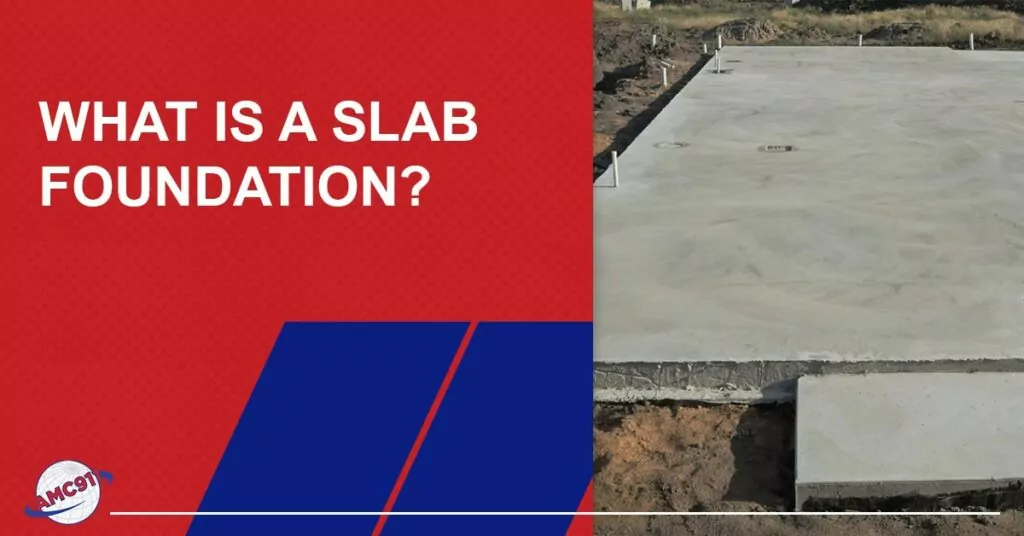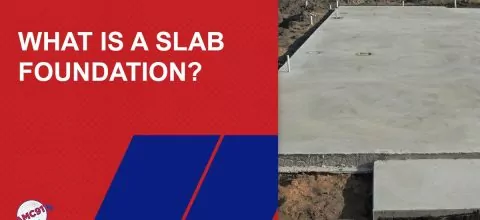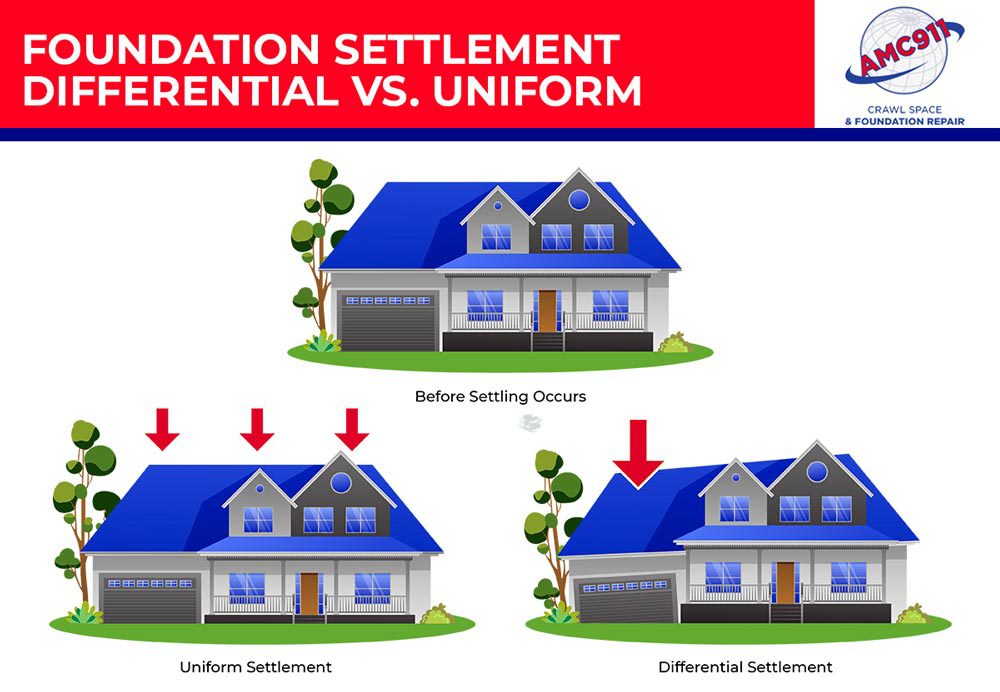There are many different types of foundations. Some of those that are commonly known among homeowners include basements and crawl spaces. It is also possible, however, to have a slab foundation, and it provides many benefits.
What Is a Slab Foundation?
As the name suggests, a slab foundation is a type of foundation that is a single slab of concrete. It is poured at ground level, which is why they are often referred to as slab-on-grade foundations.
This type of foundation is also the floor of the building. It is a thick slab of reinforced concrete, and the home’s structure is built directly on top of it.
What Are the Benefits of A Slab Foundation?
Slab foundations may be simple, but they provide many benefits as well. They are sometimes preferred to other foundations, such as crawlspaces and basements. Here are some of the benefits to consider.
- Cost Savings: It can be challenging to find affordable housing, but the cost of the home can be substantially reduced with a slab foundation. The construction cost will be significantly lowered since you are not building any basement or crawlspace walls. In addition, the slab foundation can often be poured in a matter of days rather than the extended amount of time it may take to build a basement or crawl space.
- Low Maintenance: The last thing homeowners want is problems with the foundation. A slab foundation is thick and solid, and it is not out of the question for it to last up to a century or more. Unlike a basement or crawl space, which will need ongoing maintenance to eliminate certain problems, the slab foundation will continue providing a solid footing for your home.
- Practicality: A number of issues associated with basements and crawl spaces are not a problem with a slab-on-grade foundation. The possibility of mold and mildew or infestations of rodents and insects is substantially reduced. Slab foundations are practical because there’s no space under the slab that would allow these secondary problems to occur. It’s not that there aren’t any issues associated with slab foundations. They just tend to be fewer than you would experience with other foundations.
Common Problems with Slab Foundations
Many homeowners would agree that slab foundations are the best choice, but that doesn’t mean they are free from issues. Below are some of the more common problems you may experience with a slab foundation.
- Cracking: Some slab foundation hairline cracking is expected as the concrete cures. Larger cracks that may expand, however, could be a sign of more serious problems. Cracking concrete may occur due to movement in the topsoil, including erosion and expansion due to wet soil. In addition, repeated freezing and thawing of the soil under the concrete could cause cracking.
- Upheaval: A slab foundation may experience upward movement as the soil below it expands due to freezing or excessive moisture. This could also cause cracking.
- Settling: It is not uncommon for a home to settle slightly after a few years, but if it continues to settle, it can be a problem. Often, the settling does not occur evenly across the slab. The uneven sinking of the slab is known as differential settlement. Settling in the slab can cause problems with the entire home. As the slab moves, it can cause issues such as sticking windows and doors, cracks in the wall, ceiling, and floor, and uneven floors.
4 Signs Of Slab Foundation Failure
Foundation failure is not an issue limited to basements and crawl spaces. It can occur in any type of foundation, including a slab foundation.
Recognizing the possibility of slab foundation failure is vital to having the problem resolved. Foundation failure is a one-way street. Ignoring the problem will not make it go away.
Watch for some of the following problems that could indicate an issue with the foundation. Monitor any issues you experience carefully and contact us for a foundation inspection.
- Sticking Windows and Doors: All areas of the home are under pressure when the foundation sinks. This includes the window and door frames, which could get out of square. As a result, you may notice that the windows and doors are sticking when you open or close them.
- Wall, Floor, And Ceiling Cracks: Most construction materials are not very flexible, so as the foundation moves, cracks could appear. Many of these cracks may originate near the windows and doors. Other cracks could go across the ceiling and down a wall.
- Uneven Floors: You may get a sensation as if you were falling, or you may feel dizzy as you walk across the room. This is a common sensation as the floors shift due to slab foundation settling.
- High Humidity: Cracks in the slab foundation or doors and windows that no longer seal properly could lead to higher humidity levels in the home. This can be an uncomfortable problem, and it can also raise your energy bill, as humid air is harder to heat or cool.
How Are Slab Foundations Repaired?
If you think you are having problems with your foundation, there are ways to repair it. These are done by professionals who understand the process, have years of experience, and are equipped to do the work.
The first step in the process is to have your foundation inspected. This isn’t only something that should be done when problems begin occurring. It is recommended that you have your foundation inspected once a year to catch problems early.
If the foundation is sinking, it can be fixed using slab piers. These are installed under the foundation to provide a stable footing for your home.
Holes will be drilled through the slab foundation, and the piers will be installed until they reach load bearing soil. At that point, the piers are attached to the underside of the slab. This will correct many issues associated with slab foundation failure and keep the slab from sinking further.
If you think there might be a problem with your home’s slab foundation, contact AMC911 for a foundation inspection. One of our friendly foundation professionals will get with you soon to get the process started.

















